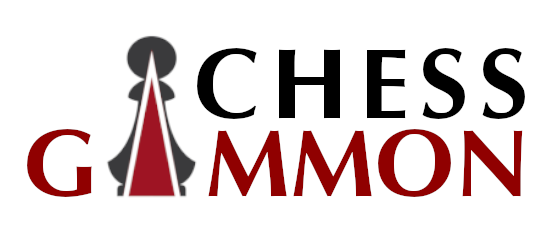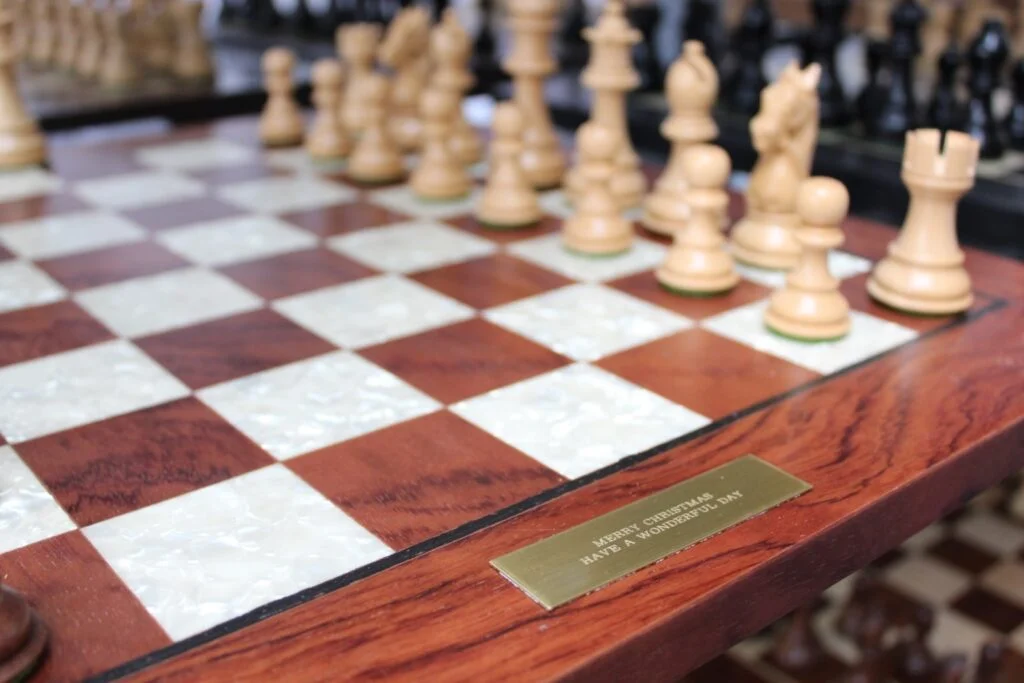Welcome, fellow chess enthusiasts! Today, let’s delve into the fascinating world of the Reti Opening. Named after the Slovakian master Richard Reti, this strategic chess opening offers a unique approach to the game that can catch your opponent off guard and lead to exciting gameplay. Feel free to also check out 40 Famous Chess Moves to Learn.
1.Introduction to the Reti Opening
2. History and Origins of the Reti Opening
3. Key Ideas and Principles of the Reti Opening
4. Common Variations in the Reti Opening
5.Famous Games and Players Utilizing the Reti Opening
6. Tips and Strategies for Playing the Reti Opening
7. Conclusion
Introduction to the Reti Opening
Now, you might be wondering, what exactly is the Reti Opening? Well, it’s characterized by an early fianchetto of the light-squared bishop, typically followed by a flexible pawn structure. This setup allows for a fluid and dynamic game, where both sides have room to maneuver and develop their pieces strategically.
One of the key aspects of the Reti Opening is its flexibility. Unlike more traditional openings that may lead to a set pawn structure and piece placement, the Reti allows for a wide range of possibilities and adaptability based on your opponent’s response. This can keep your opponent guessing and give you the upper hand in planning your next moves.
Whether you’re a beginner looking to explore new openings or a seasoned player looking to spice up your game, the Reti Opening offers a fresh and intriguing approach to chess. By mastering the key ideas and principles of this opening, you can expand your strategic repertoire and surprise your opponents with your creative gameplay.
Throughout this guide, we
History and Origins of the Reti Opening
Ah, the Reti Opening – a subtle yet powerful chess opening that has been a favorite among grandmasters for decades. But where did this strategic gem come from? Let’s take a trip down memory lane and explore the history and origins of the Reti Opening.
Named after the Czechoslovakian Grandmaster Richard Reti, this opening made its debut in the early 20th century. Reti was a pioneer of hypermodern chess, advocating for a more positional and flexible style of play over the traditional classical approach. The Reti Opening reflects this philosophy perfectly.
One of the earliest recorded games using the Reti Opening was played in 1922 between Reti himself and the great World Champion, Jose Raul Capablanca. This game showcased the dynamic nature of the opening, as Reti employed a flank pawn advance to control the center and create imbalances on the board.
Over the years, the Reti Opening has evolved and adapted to the changing landscape of chess theory. It has been utilized by numerous top players, including Garry Kasparov, Anatoly Karpov, and Magnus Carlsen, to name just a few. Its flexibility and adaptability make it a formidable weapon in any player’s arsenal.
One of the key features of the Reti Opening is its ability to transpose into a wide variety of pawn structures and positions. Players can choose to play a closed, quiet game or opt
Key Ideas and Principles of the Reti Opening
So, you’re intrigued by the Reti Opening, huh? Well, let me tell you, it’s a fascinating opening strategy that can really shake up your chess game. Let’s dive right into the key ideas and principles behind this unique and versatile opening.
Flexibility: One of the main characteristics of the Reti Opening is its flexibility. By delaying the immediate occupation of the center, White aims to lure Black into overextending their pawns and then striking back at the opportune moment. This flexibility allows White to adapt to various pawn structures and game plans.
Control of the center: While the Reti Opening may seem unorthodox with its flank pawn moves, it eventually aims to exert control over the center. By fianchettoing the bishop on g2, White exerts indirect pressure on the d5 square, which is a key central square in many openings. This control of the center can lead to a strong position and attacking opportunities.
Development: Just like in any other chess opening, development is crucial in the Reti Opening. By focusing on developing your pieces efficiently and harmoniously, you can quickly mobilize your forces and launch effective attacks. Remember, the goal is not just to control the center but also to coordinate your pieces for maximum effectiveness.
Delayed pawn tension: In the Reti Opening, both
Common Variations in the Reti Opening
So, you’ve decided to dive into the fascinating world of the Reti Opening. Congratulations on choosing a strategic and flexible opening with a rich history! As you navigate through the complexities of this opening, it’s essential to familiarize yourself with some of the common variations you may encounter on your chess journey. Let’s take a closer look at a few key variations:
**1. King’s Indian Attack:**
In this variation, White aims to control the center and quickly launch an attack on Black’s kingside. By playing d3, Nf3, g3, and Bg2, White sets up a formidable pawn structure and develops pieces harmoniously. This variation often leads to dynamic positions with chances for both sides.
**2. Hedgehog System:**
The Hedgehog System is a flexible setup often employed by Black that involves forming a pawn structure resembling a hedgehog. Black’s pieces are placed harmoniously behind the pawn structure, allowing for counterplay and a solid defense. This variation requires patience and strategic maneuvering to break through Black’s defenses.
**3. English Four Knights:**
In the English Four Knights variation, both players develop their knights to f3 and c6 early on. This variation can lead to complex middlegame positions with strategic maneuvering and subtle nuances. Players must exercise caution and maintain a strong pawn structure to navigate the complexities of this variation successfully.
Famous Games and Players Utilizing the Reti Opening
Have you ever wondered about the chess openings used by some of the greatest players in the game? The Reti Opening, named after Richard Reti, is a strategic and versatile opening that has been employed by many top grandmasters over the years. Let’s take a look at some famous games and players who have utilized the Reti Opening to great effect.
**1. Bobby Fischer vs. Boris Spassky (1972 World Chess Championship)**
One of the most iconic matches in chess history, the 1972 World Chess Championship between Bobby Fischer and Boris Spassky featured several games where the Reti Opening was employed. Fischer, known for his precise and aggressive play, used the Reti Opening to surprise his opponent and gain a strategic edge in some of the critical games of the match.
**2. Garry Kasparov vs. Anatoly Karpov (1990 World Chess Championship)**
In another historic World Chess Championship match, Garry Kasparov and Anatoly Karpov faced off in a battle of wits and skill. Kasparov, a fierce tactician, utilized the Reti Opening in several games to outmaneuver his opponent and secure crucial victories on his way to winning the championship.
**3. Magnus Carlsen**
Current World Chess Champion Magnus Carlsen is known for his deep understanding of various openings and his ability to outplay opponents in complex positions.
Tips and Strategies for Playing the Reti Opening
Are you looking to add a touch of creativity and surprise to your chess games? The Reti Opening might just be the perfect choice for you. As with any chess opening, understanding key tips and strategies can make a world of difference in your success with the Reti Opening. Let’s dive into some valuable advice to enhance your gameplay:
**1. Foster a Flexible Approach:**
One of the core characteristics of the Reti Opening is its flexibility. By delaying the development of your central pawns, you can adapt your setup based on your opponent’s moves. Embrace this flexibility and keep your options open to capitalize on any weaknesses in your opponent’s position.
**2. Control the Center:**
Despite its unconventional nature, the Reti Opening still revolves around the fundamental principle of controlling the center of the board. Aim to influence the central squares with your pieces and maintain a strong presence in this critical area. This will give you more room to maneuver and exert pressure on your opponent.
**3. Prioritize Piece Development:**
While the Reti Opening allows for a slower buildup, don’t neglect the importance of piece development. Focus on developing your minor pieces efficiently and coordinating them to create strong attacking chances. Develop with purpose and maintain harmony among your pieces to maximize their effectiveness.
**4. Utilize Tactical Opportunities:**
The Reti Opening often leads to dynamic and tactical positions, offering ample opportunities for creating
Conclusion
Well, there you have it! The Reti Opening is a versatile and strategic chess opening that can surprise and outsmart your opponents. By utilizing the principles of flexibility, control of the center, and delayed pawn structure decisions, you can create unique and dynamic positions on the board.
As you delve into the world of the Reti Opening, remember to always stay one step ahead of your opponent. Keep them guessing and make sure to adapt your game plan according to the specific positions that arise. By staying flexible and open-minded, you can navigate the complexities of the Reti Opening with confidence.
Don’t be afraid to experiment with different variations and approaches within the Reti Opening. Each game presents a new opportunity to learn and grow as a player. Embrace the challenge and enjoy the journey of mastering this intriguing and strategic opening.
Remember, practice makes perfect. The more you play and study the Reti Opening, the better you will become at recognizing patterns, formulating plans, and executing tactics. So, keep honing your skills and never stop striving to improve.
Lastly, have fun with it! Chess is a game that stimulates the mind and challenges your intellect. The Reti Opening adds an extra layer of excitement and intrigue to your games. So, embrace the thrill of the unknown and enjoy the






